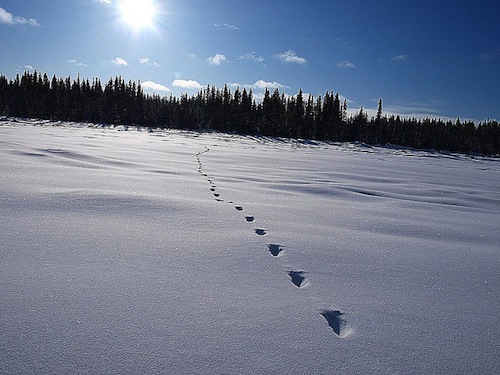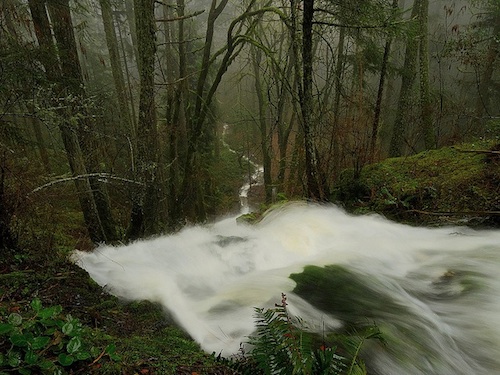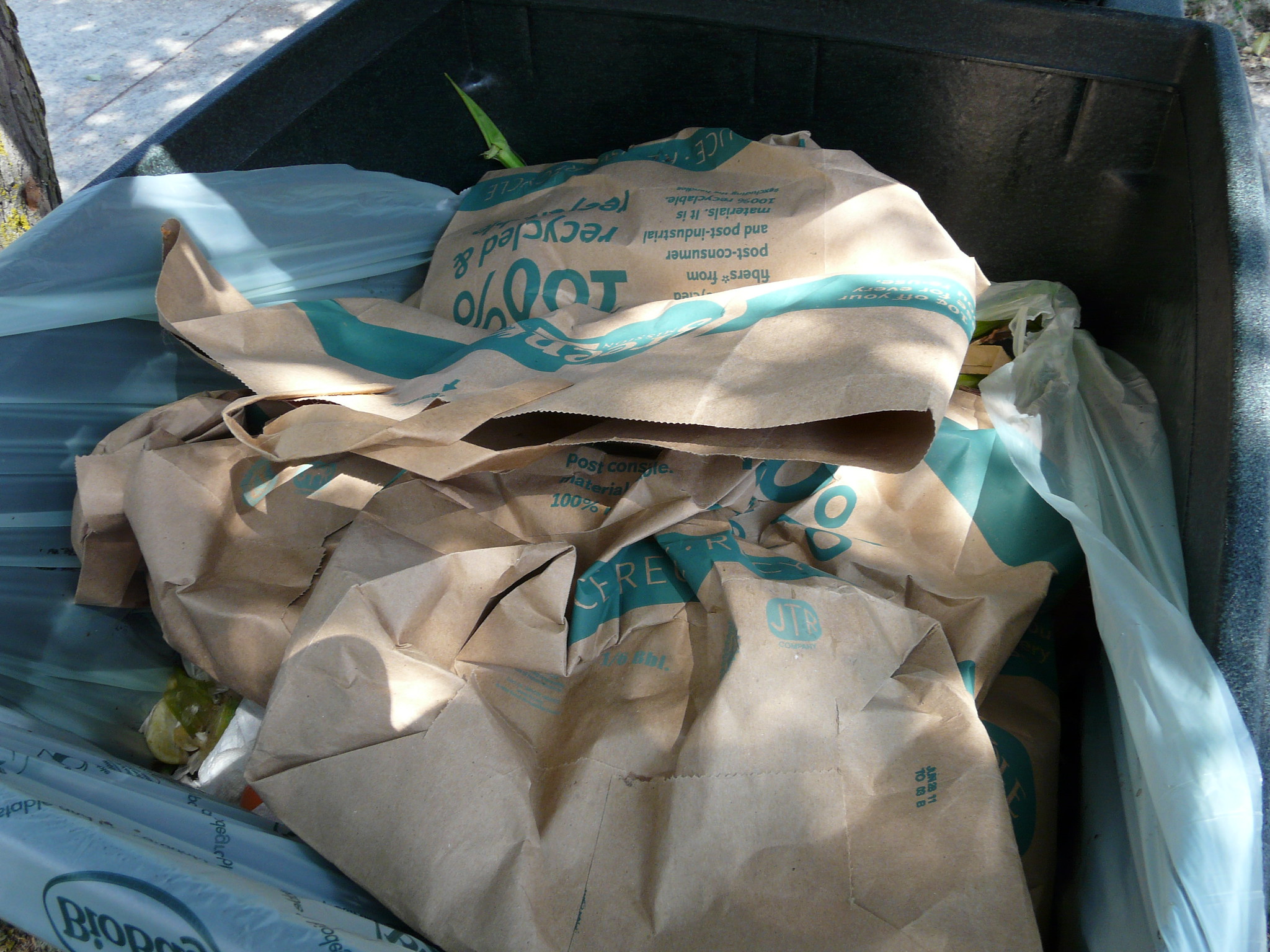Chapter 10. Environmental Stewardship
10.5 Mitigating Tourism and Hospitality Impacts

In recent years in BC, the tourism industry has felt the impacts of climate change, habitat destruction, biodiversity loss, and increased conflicts over the use of natural areas. The winters of 2013/2014 and 2014/2015 were two of the warmest on record, and numerous low-elevation coastal mountain resorts were forced to close in the middle of the winter season (Hager, 2015). As well, the province is experiencing increased pressure on endangered wildlife species that draw tourists and residents alike. The death of an orca whale off the coast of Vancouver Island in late 2014 raised questions of water pollution and contamination (Theodore, 2014).
Take a Closer Look: The Future of Mountain Resorts
With their dependence on quality snow conditions for guests, ski areas will likely be among the first to be impacted by climate change. Read an article on this topic from the Tyee, “Peak Snow? BC Ski Resorts Brace for Warmer Era.”
In the face of this negative environmental news, there are a variety of initiatives underway that have the potential to implement real change. These include:
- Carbon offsetting
- Energy conservation
- Water conservation
- Food production management
- Waste management
- Accreditation
This section explores these potential solutions.
Carbon Offsetting
Carbon offsetting is a standardized, regulated system that provides organizations with the ability to invest in green initiatives that will counterbalance their emissions, hence creating a carbon neutral situation (David Suzuki Foundation, 2009).
The concept of carbon offsetting stems from a recognition that despite a desire to entirely eliminate carbon emissions, sometimes doing so isn’t immediately feasible. Consequently, carbon offsetting has proven popular with tourism companies that can offset some or all of their emissions, either by themselves or by providing the opportunity for customers to do so. Examples are most commonly found in the transportation sector, where the reliance on traditional fossil fuels makes it challenging to completely eliminate carbon emissions.

Take the small B.C. airline Harbour Air, for instance. Since 2007, the company has completely offset all of the emissions produced by its airplanes by investing in energy-efficiency and fuel-switching projects in BC. The cost of the projects is passed on to passengers through a small levy added to the ticket price, and despite the cost increase, passenger traffic increased by 12% to 15% in the following year (Offsetters, n.d.).
Take a Closer Look: Carbon Offsetting and the Vancouver 2010 Winter Olympics
The Vancouver 2010 Winter Olympics were the first carbon-neutral Olympic Games. For more information, read the discussion paper, Meeting the Challenge: A Carbon Neutral 2010 Winter Games.
Carbon offsetting isn’t just for the transportation sector, however. Tinhorn Creek Winery in Oliver has become a tourism destination for wine and culinary tourists and has some innovative conservation concepts. In addition to having an offsetting program, the winery runs its vehicles on biodiesel. It also holds virtual tastings with travel media over the web (media obtain samples of the product ahead of time), eliminating travel to the Okanagan to have a Tinhorn experience. The property remains dedicated to exploring sustainability concepts as its survival is based on mitigating climate change and the negative effects of drastic weather changes on wine production (Tinhorn Creek Winery, 2014).
Energy Conservation
Despite the relatively low cost of electricity in BC, it benefits all operators to do their part by reducing consumption and greenhouse gas emissions. Not only is this the right thing to do for the physical environment, it’s also a means to save money.
For example, the Four Seasons in Vancouver reduced their electricity consumption by 4,000 megawatt hours in the period between fall 2012 and spring 2014. They did this by installing timers and photocells on lights, auditing appliances, ensuring proper maintenance of the furnace and HVAC systems, and cleaning light fixtures and fans so these operated at their best. The energy reduction represented a savings of $135,000 for the property (Hui, 2014).
Take a Closer Look: Energy Conservation in the Hospitality Sector
BC Hydro’s PowerSmart program for businesses has helped operators large and small — from BC Ferries to the Pear Tree Restaurant in Burnaby — to reduce their footprint and save money. Read success stories, check out helpful tools, and learn more about the program by visiting Hospitality: Increase profits by reducing energy costs.
BC Ferries is another organization that has realized energy savings. It did this with the help of BC Hydro education programs and incentives, retrofitting lighting and installing radiant heat in a workshop and toll booths. These efforts yielded an energy savings of over 335 megawatt hours in one year. That represents enough energy to power 31 average homes over the same time period (BC Hydro, 2013).
Water Conservation

British Columbia is home to 25% of Canada’s fresh water, and so to many it appears that water conservation is not an issue in the province. However, water is not evenly distributed across regions, nor is it equally available all seasons of the year (BC Ministry of Environment, n.d.b). This is especially evident on Salt Spring Island, a popular tourist destination with numerous small accommodation properties. The island experiences water shortages in the peak summer season when lake and groundwater levels drop and demand is highest.
In 2006, a number of local water conservation groups on Salt Spring Island surveyed 117 accommodation providers to determine what measures might be taken to alleviate the summer pressure on freshwater systems. They were pleasantly surprised to find that several properties had already taken steps, including installing low-flow toilets and flow restrictors on shower heads, requiring minimum two-night stays (which reduces the amount of laundry required), and offering visitor education campaigns. The combined efforts of properties on the island have proven to make a significant difference to the collective capacity of 1,500 guests per night (O’Callaghan, 2006).
Food Production and the Environment
As discussed in Chapter 4 on food and beverage services, there is increasing awareness among the general public about the importance of healthful eating. This goes hand in hand with an increased understanding of food production issues including environmental impacts such as pollution, soil depletion, and the toxicity (both to humans and the environment) of industrial food growth practices. Over the last 30 years, American (and to an extent, Canadian) food growth has centred on the mass production of inexpensive staple foods such as corn and soy, which are used in unhealthy foods like high-fructose corn syrup and soybean oil, and are fed to the animals we eat (University of Minnesota, 2009).
Spotlight On: Island Chefs Collaborative
The Island Chefs Collaborative (ICC) is an organization that supports connections between local agriculture and the food and beverage industry. Its vision is a local and sustainable food and agriculture system for Vancouver Island. For more information, visit the Island Chefs’ Collaborative website.
Farming mass amounts of one crop is known as monoculture, a practice that depletes the soil and encourages the use of pesticides and fertilizers for increased production. The impacts of these chemicals to date include the creation of a “dead zone” at the outflow of the Mississippi River into the Gulf of Mexico, where no fish or other animals can live (University of Minnesota, 2009).
The soil in which food is grown is becoming less rich as commercial fertilizers focus only on building specific nutrients. Combined with the long distances that foods are shipped (sometimes causing nutrients to be depleted), consumers are becoming wary of commercially produced foods (University of Minnesota, 2009).
The 100-Mile Diet and Farm to Table
In 2005, two BC-based journalists, J.B. MacKinnon and Alisa Smith, began chronicling the challenges of only eating food produced within 100 miles of their homes, as part of a serial of articles for the Tyee. Their posts became a book, The 100-Mile Diet, launched in 2007 and heralded as a vanguard of the local food movement (Tyee, 2005).
Spotlight On: Circle Farm Tour
Created through a partnership between destination marketing organizations in the Fraser Valley communities of Abbotsford, Chilliwack, Agassiz-Harrison, and Maple Ridge-Pitt Meadows, the Circle Farm Tour brings awareness to farming practices and farmland conservation while creating a collaborative tourism product. Self-guided tours are made possible through a series of branded maps, brochures, and a central website. For more information, visit the Circle Farm Tour website.
Organizations such as FarmFolk CityFolk, a not-for-profit organization dedicated to food sustainability in the province, have been promoting farm-to-table dining for over 20 years. Their efforts include working with restaurants to bring quality ingredients to the sector, and hosting annual events that celebrate the “feast of fields” in regions such as the Okanagan (FarmFolk CityFolk, 2014).
Waste Management

In 2012 in BC, the amount of garbage generated was equivalent to 570 kilograms per person. With landfills and treatment sites filling to capacity (and sometimes beyond), it’s imperative that communities and businesses work together in the practice of proper waste management through implementing recycling programs, reducing garbage, properly treating industrial and hazardous waste, and treating sewage and wastewater (Government of BC, n.d.).
One very effective means of reducing garbage taken to the landfill is implementing a food waste program in which food scraps are placed in a green bin and collected by the community for composting. The City of Vancouver initially introduced such a program to single family households from 2011 to 2013 and saw a 30% drop in garbage generated. In 2014, the program was expanded to include all households and businesses and placed a ban on food scraps in the garbage. The program met resistance from the BC Restaurant and Foodservices Association, which viewed the initiative as placing an extra cost and being a logistical challenge for members (Nagel, 2014). Individual restaurateurs were hopeful, however, that the city would help businesses by increasing pickup and expanding the efficiency of their other recycling programs (Robinson, 2014).
Plants & Wildlife
The impact of tourism to plant-life and wildlife in BC is immense, and the impacts range from habituation of animals to humans to the actual destruction of ecosystems and habitats as well as the hastening of species decline. Tourism can affect plant-life through acts of trampling sensitive ecosystems, gathering branches for campfires, over-collecting flowers and plants, litter, and/or careless acts with backcountry use that have sparked uncontrolled forest fires in BC especially this past decade. Wildlife are also affected wherein many animals have become habituated and tolerate tourists wherein feeding and breeding habits are disrupted, habitats are destroyed/access is limited, and food systems are altered greatly.
Accreditation and Certification
Environmental accreditation or certification is a type of voluntary regulation where an organization agrees to follow a set of standards, predefined processes, or regulations. These are generally developed by independent non-governmental organizations with a goal of reducing the environmental impact within an industry. Accreditation can encompass any of the practices discussed so far — from carbon offsetting to energy and water conservation to waste management.
Beyond the value of making the ethical decision of working to reduce environmental impacts, organizations receive value by being able to promote themselves as being environmentally friendly and therefore attracting consumers (Font, 2002). And for guests, choosing an independently accredited business may help them avoid companies that are guilty of greenwashing, which is the promotion of environmentally friendly tourism products without actually achieving the environmental standard promised (Lelenicz & Simoni, 2012; Self, Self, & Bell-Haynes, 2010).
Spotlight On: Green Key Global
Green Key Global is an international certification body that evaluates the accommodations and meetings industries on the basis of their sustainable initiatives. Headquartered in Ontario, its Green Key Eco-Rating Program awards from 1 to 5 keys to hotels, with 47 properties currently holding the highest rating. Green Key Global conducts an on-site assessment and provides operators with suggestions for improving their sustainability efforts. Awarded keys are then used as marketing and promotional tools. A similar program serves the meetings and events sector. For more information, visit the Green Key Global website.
Organizations join such programs voluntarily. This typically involves going through an audit to prove adherence to a set of environmental standards (Font, 2002). Generally, an audit consists of an independent third party visiting a business or operation and reviewing its practices against a checklist of standards; those that pass earn the certification or accreditation.
It is estimated that over 100 different tourism environmental certification programs exist, each with different standards and criteria (Self, Self, & Bell-Haynes, 2010).
Spotlight On: Sustainable Tourism
Sustainable Tourism is an environmental tourism certification program where tourism operators are assessed for adherence to sustainability principles. It offers ongoing support and consultation so that operators may work to achieve a high level of environmental sustainability. For more information, visit Sustainable Tourism.
Whether it be through carbon offsetting, energy and water conservation, increased use of local and organic food products, or official accreditation programs, the tourism industry has a number of options for lessening the impacts of businesses on the physical environment.
A market-based system that provides options for organizations to invest in green initiatives to offset their own carbon emissions.
A farming practice that depletes the soil and encourages the use of pesticides and fertilizers for increased production.
Developed to provide opportunities to fund a variety of promotional services for a community; the act defines what it means to be a resort community.
The act of claiming a product is "green" or environmentally friendly solely for marketing and promotional purposes.

